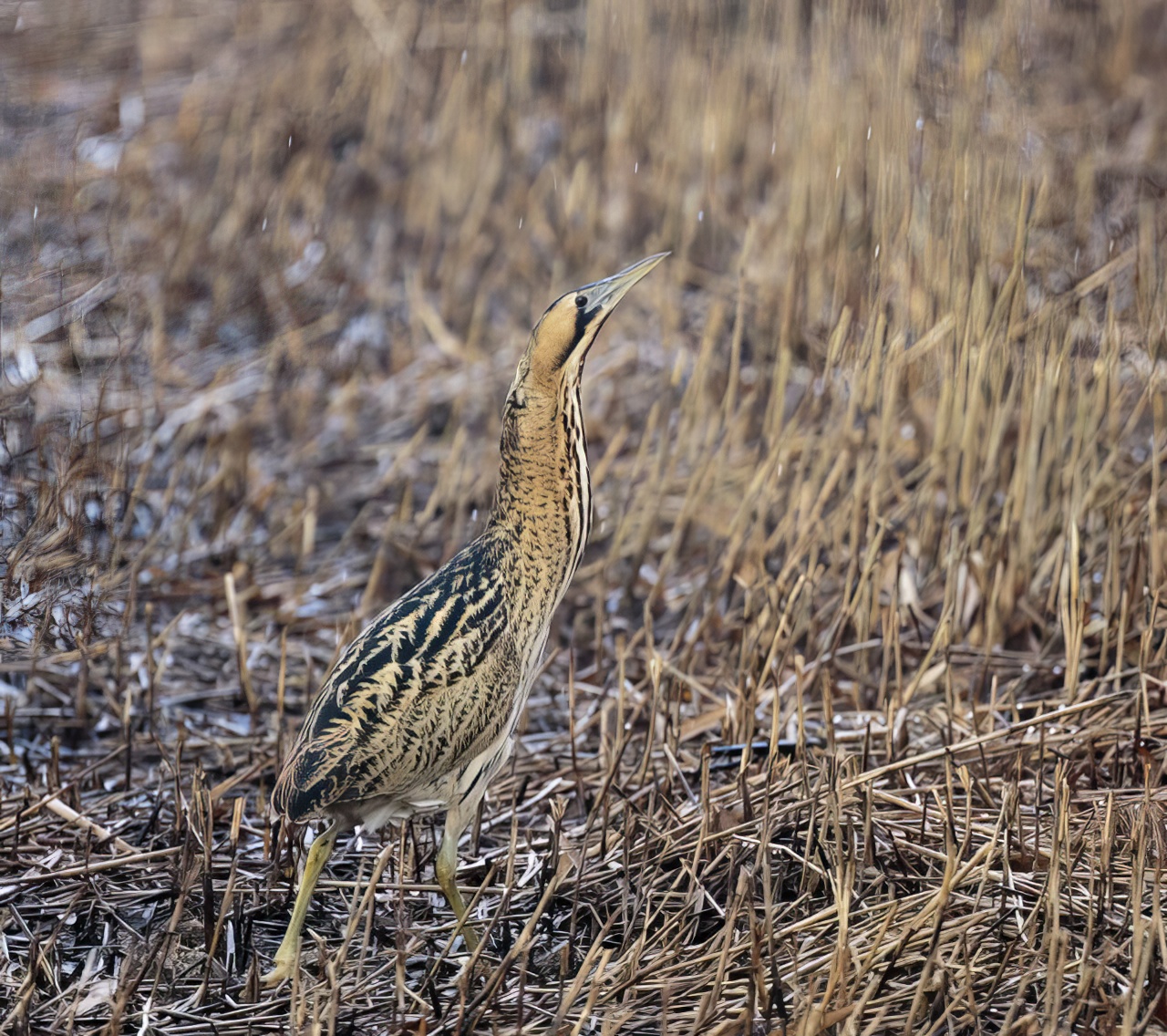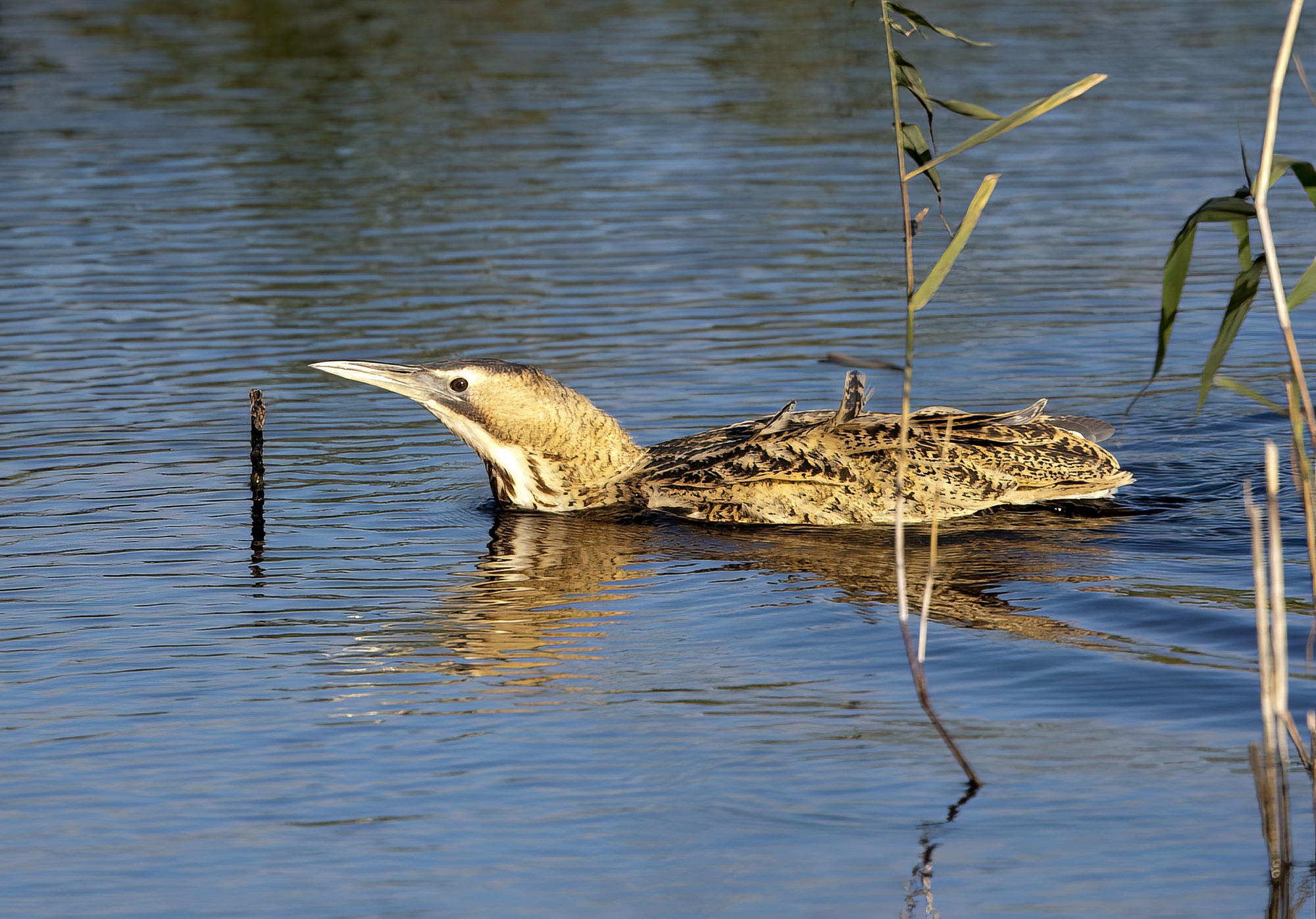Eurasian Bittern Botaurus stellaris
Very scarce breeder and winter visitor. Bred to early 19th century, from 1940s-1979 and in recent years.


Bitterns were eliminated as breeding birds by drainage by 1850 and it was a rare bird in Lincolnshire until the late 1940s when it began breeding in the Humber Clay Pits. There were up to 6 boomers there until 1979 by which time the reed beds had deteriorated and breeding stopped. A great deal of management work by LWT saw them return to the Humber in 1999 and they have appeared every year since then though fledging success has been poor until very recently. RBBP records show an average of 3 boomers per year during the period 2013-2017 and fledging has been reported at Far Ings and Alkborough Flats in 2018 and 2019. In the fenlands in the south of the county Bitterns have returned to breed in the Baston & Langtoft GP complex and 2020 was the best year for Bittern for many years and hopefully the start of a “boom” in the Lincs Bittern population - records were received from 16 sites in 2020 and there were seven confirmed pairs across the raising seven young and a there were a further five probable breeders. This compares to four confirmed pairs raising five young and three other 'boomers' in 2019.
It remains a very scarce winter visitor and bad winters like 2010 can knock the breeding population back. In the last 10 years peak monthly counts have tended to fall between November and February and have ranged from six in January 2011 to 15 in January 2013 with an average of nine overall.
(Account as per new Birds of Lincolnshire (2021), included September 2022)
